Bank Headquarters
The first home of the Central Bank Headquarters in 1950, was at “Simes” building which was also known as “House of Cargills” located at York street, in Colombo Fort. The Bank Supervision, Economic Research, Public Debt and Secretariat departments were housed in this building while the Banking Department which also included the Currency Division functioned from the Secretariat Building (General Treasury Building, in which the Ministry of Finance is located).
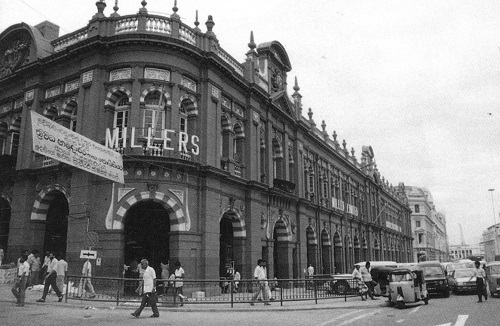 |
Simes Building, York Street in Colombo Fort the first home of the Central Bank Headquarters in 1950.
|
|
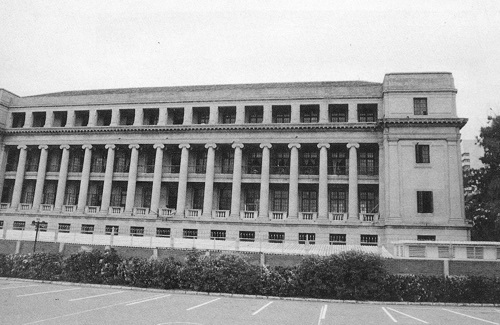 |
The Secretariat building (General Treasury Building) where the Banking and Currency Department initially functioned.
|
|
However, the Central Bank was not in a position to continue its operations at its original building for a long period. In 1955, after five years from its establishment, the Central Bank Headquarters was moved to the “Hemas” building which was located in front of Simes building due to inadequate space, during the period of Governor, Sir A. G. Ranasinghe. The ground floor of the Hemas building was completely assigned to the Banking Department. The Public Debt and Secretariat departments were located in the second floor. The offices of the Governor, Deputy Governor, Director Economic Research, Director Bank Supervision, and the Secretary were located on the third floor. Another important member the Employees’ Provident Fund (EPF) Department joined the Central Bank family on 01st August 1958. As the Hemas building could not accommodate the EPF Department due to lack of space, it was first housed at the YMBA building at Sir Baron Jayathilake Mawatha.
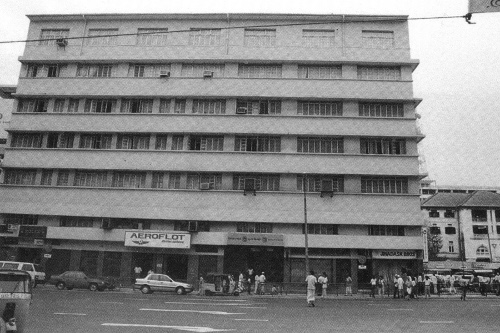 |
“Hemas” building at York Street, Colombo Fort to which Central Bank Headquarters was moved in 1955.
|
|
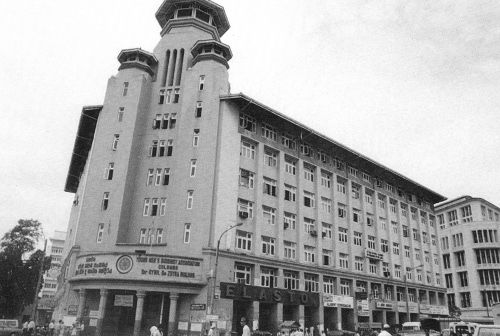 |
Young Men's Buddhist Association (YMBA) building at Sir Baron Jayathilake Mawatha, Colombo which first housed the EPF Department of the Central Bank in 1958.
|
|
|
Under these circumstances, the Central Bank realized the necessity to move to its own building. A land of one acre owned by the British colony which was located at Queen's Street in Colombo Fort was gifted as a Crown Grant to the Central Bank to build its Headquarters. In its vicinity was the prominent landmark, the clock tower lighthouse at the junction of Queen's Street and Chatham Street.
International tenders were called through Sri Lanka embassies abroad for a reputed building contractor and Ed. Zublin AG, Stuttgart in Germany was selected. Van Gothem Company from Belgium was the architect. Selwarathnam and Monk, the Chartered Architects were their Sri Lankan resident representatives. The construction commenced in the year 1960 when Mr. D. W. Rajapathirana was the Governor. The Assistant to the Governor, Mr. D. C. Gunasekera was the Officer in charge of construction.
The next serious challenge was to bring different departments of the Central Bank located in different buildings, under one common roof of the Central Bank Headquarters. Central Bank’s administration with the assistance of private movers, within a few days relocated all departments and offices of the Central Bank housed at the Hemas building, YMBA building, Echelon building and the Secretariat building to its own Headquarters in July 1964. It is on record that the Governor Mr. D. W. Rajapathirana had commended the Bank’s administration for the excellent support given to completing the relocation project without misplacing even a single item.
|
|
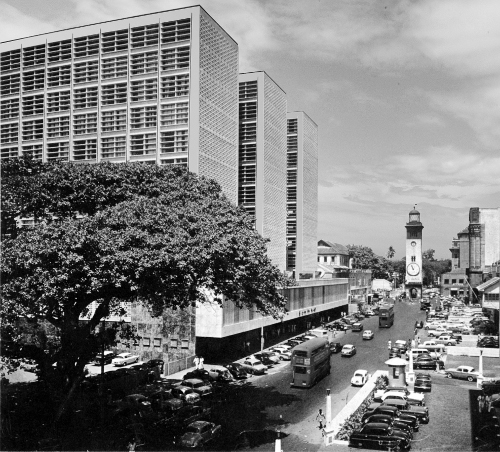 |
The Headquarters of the Central Bank was established in its own premises at No.30, Janadhipathi Mawatha, Colombo 01 in 1964. The new Headquarters provided adequate space to house all departments of the Bank.
|
|
The unique Headquarters building comprised of 3 towers with 9 floors in each tower with a mezzanine floor in the south and north towers. The Banking Hall, a prominent feature of the Headquarters building, occupied the centre tower, where the public came to obtain their requirements of currency notes and coins and obtain replacement for their damaged currency notes. The ninth floor was reserved for the offices of the Governor, Deputy Governors, the Board Room and the Conference hall.
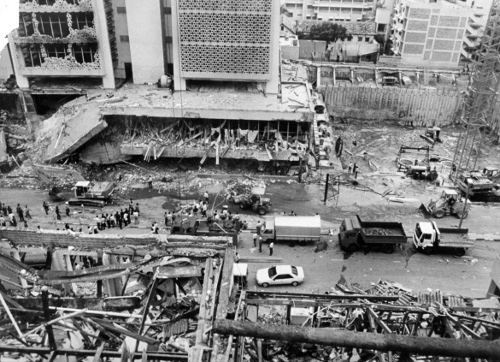 |
The extensive damage caused to the Headquarters of the Central Bank as a result of the terrorist bomb attack on 31 January 1996.
|
|
|
One of the most sorrowful events during the Bank’s history was the bomb attack by terrorists on 31st January 1996, during the tenure of Governor, Deshamanya A. S. Jayawardena.
As a result of this devastating explosion, the building was extensively damaged with precious lives of forty one employees and several members of the public being lost and many more employees being severely injured. As a temporary solution, Central Bank operations had been immediately restarted at the Rural Banking and Staff Training College (Center for Banking Studies) situated in Rajagiriya.
Later, along with the approval of the Ministers of Cabinet, until renovations to the Headquarters were completed, the main offices of Central Bank had moved to new premises, i.e. the 15- 17 floors of the World Trade Centre (Twin Towers) building on 24th October 1996.
|
|
|
|
In addition to the refurbishment of the damaged Headquarters building, the Central Bank also commenced construction of the two new towers to its Headquarters in the adjacent land, where the foundation stone had already been laid in August 1994. Both the refurbishment of existing damaged building and construction of the Central Bank extension building had been undertaken by Ed. Zublin AG, Stuttgart of Germany with Central Engineering Consultancy Bureau (CECB) providing detailed architectural drawings, interior design, detailed structural and electro- mechanical drawings and contract administration. Original design for the project had been done by Dutch Architects in collaboration with a local architectural firm. A modern bridge connects the old building to the new building at 3 levels, through 9th, 10th, and 11th floors.
Together with these added novel towers, the new premises of the Headquarters was positioned as a modern Central Bank in the region. It was equipped with an international conference hall (named John Exter International Conference Hall, as a tribute to the Bank’s founding Governor), with state-of-the-art conference facilities, comprehensive IT setting facilitated with intra and international networks, while giving birth to a new working culture with modern working facilities including a fully equipped research library to enhance the knowledge based learning environment. Central Bank commenced operations at the new Headquarters building in October 1999. To commemorate the 50th Golden Jubilee anniversary of the Central Bank, the new building was officially declared open as the Central Bank Headquarters on 27th August 2000 by Her Excellency Chandrika Bandaranaike Kumaratunga, President of Sri Lanka and the Minister of Finance and Planning, during the tenure of Governor Deshamanya A. S. Jayawardena. Further, a Rs. 1000/- commemorative silver coin, a commemorative stamp with first day cover, and Swarna Jayanthi publication had been issued to mark the Golden Jubilee.
|
|
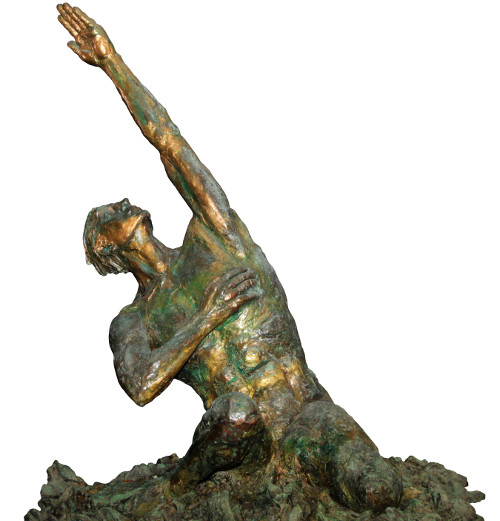 |
"Arisen" - The monument, raised to respect the courageous late employees of Central Bank of Sri Lanka.
|
|
Today, the Central Bank of Sri Lanka Headquarters stands as a unique building with 5 towers in the heart of Colombo Fort along Janadhipathi Mawatha (formerly Queen's Street), leading to the official residence of the President of Sri Lanka.
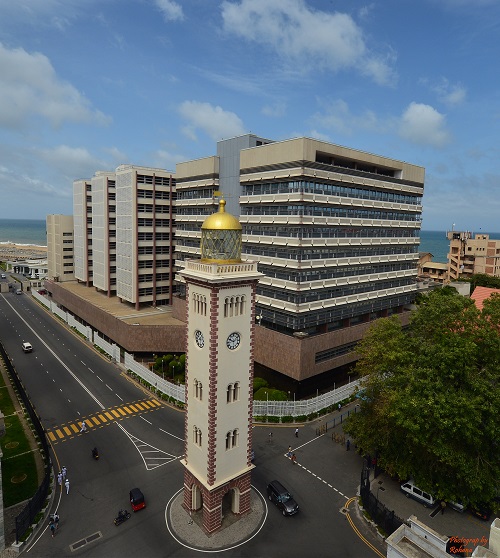 |
|
The unique Headquarters building of the CBSL as it stands today spanning 05 towers on Janadhipathi Mawatha, in the heart of Colombo (Fort) with the Indian Ocean in the background and the historical
|
|
|
|















